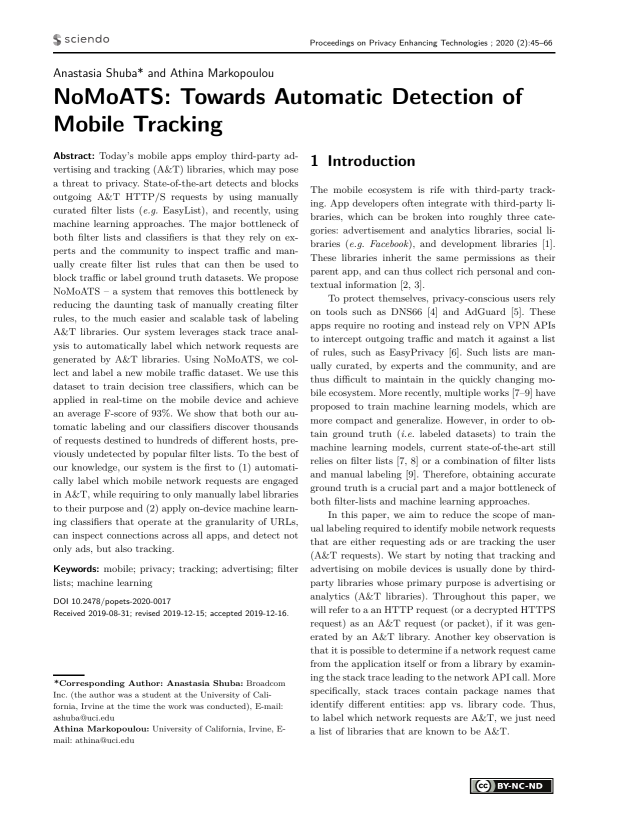NoMoATS: Towards Automatic Detection of Mobile Tracking
Authors: Anastasia Shuba (Broadcom Inc. (the author was a student at the University of California, Irvine at the time the work was conducted)), Athina Markopoulou (University of California, Irvine)
Volume: 2020
Issue: 2
Pages: 45–66
DOI: https://doi.org/10.2478/popets-2020-0017
Abstract: Today’s mobile apps employ third-party advertising and tracking (A&T) libraries, which may pose a threat to privacy. State-of-the-art detects and blocks outgoing A&T HTTP/S requests by using manually curated filter lists (e.g. EasyList), and recently, using machine learning approaches. The major bottleneck of both filter lists and classifiers is that they rely on experts and the community to inspect traffic and manually create filter list rules that can then be used to block traffic or label ground truth datasets. We propose NoMoATS – a system that removes this bottleneck by reducing the daunting task of manually creating filter rules, to the much easier and scalable task of labeling A&T libraries. Our system leverages stack trace analysis to automatically label which network requests are generated by A&T libraries. Using NoMoATS, we collect and label a new mobile traffic dataset. We use this dataset to train decision tree classifiers, which can be applied in real-time on the mobile device and achieve an average F-score of 93%. We show that both our automatic labeling and our classifiers discover thousands of requests destined to hundreds of different hosts, previously undetected by popular filter lists. To the best of our knowledge, our system is the first to (1) automatically label which mobile network requests are engaged in A&T, while requiring to only manually label libraries to their purpose and (2) apply on-device machine learning classifiers that operate at the granularity of URLs, can inspect connections across all apps, and detect not only ads, but also tracking.
Keywords: mobile; privacy; tracking; advertising; filter lists; machine learning
Copyright in PoPETs articles are held by their authors. This article is published under a Creative Commons Attribution-NonCommercial-NoDerivs 3.0 license.


